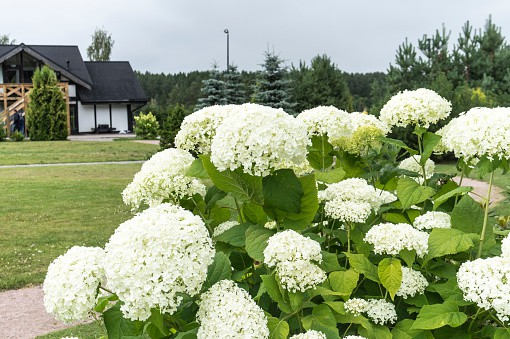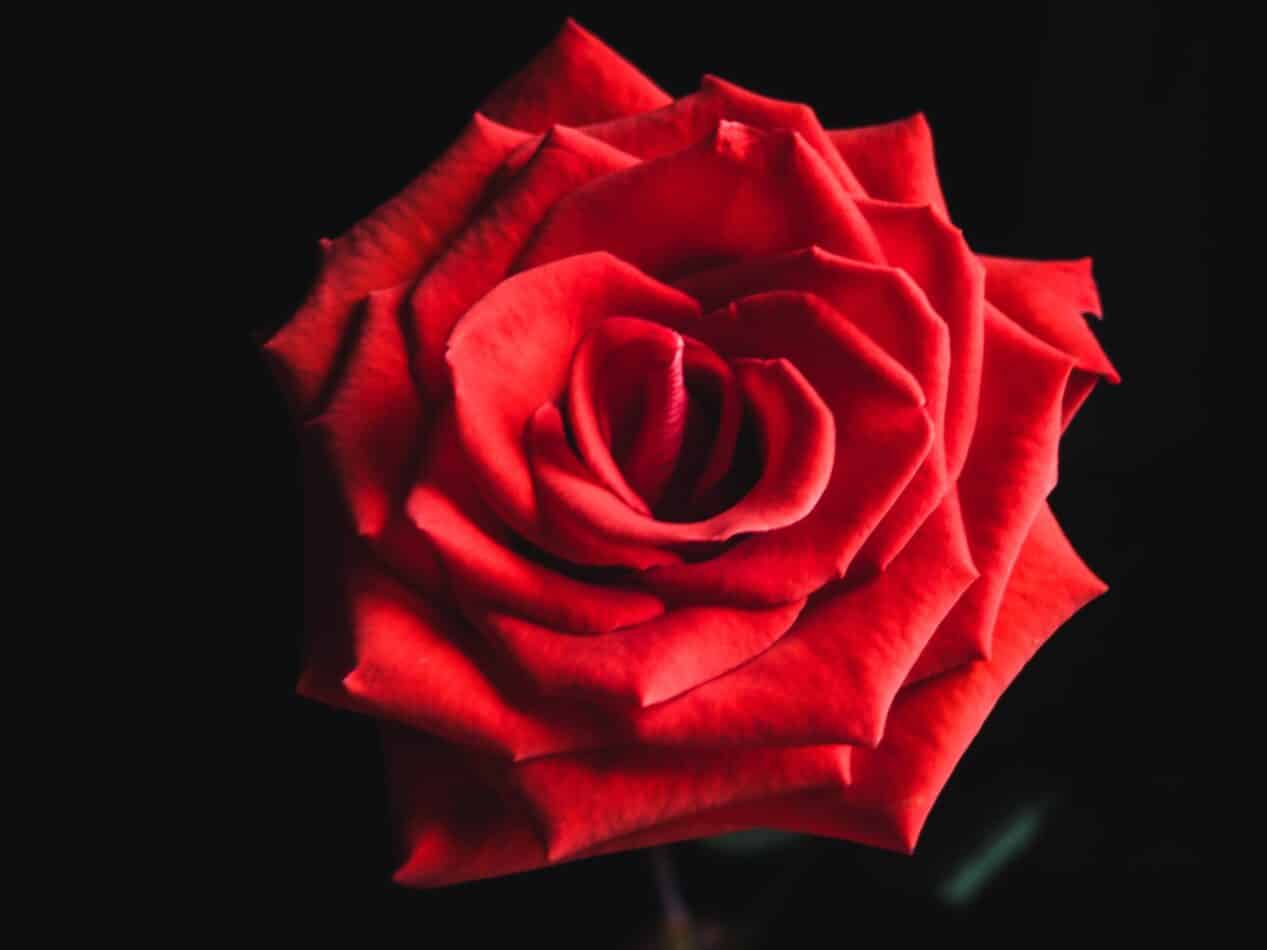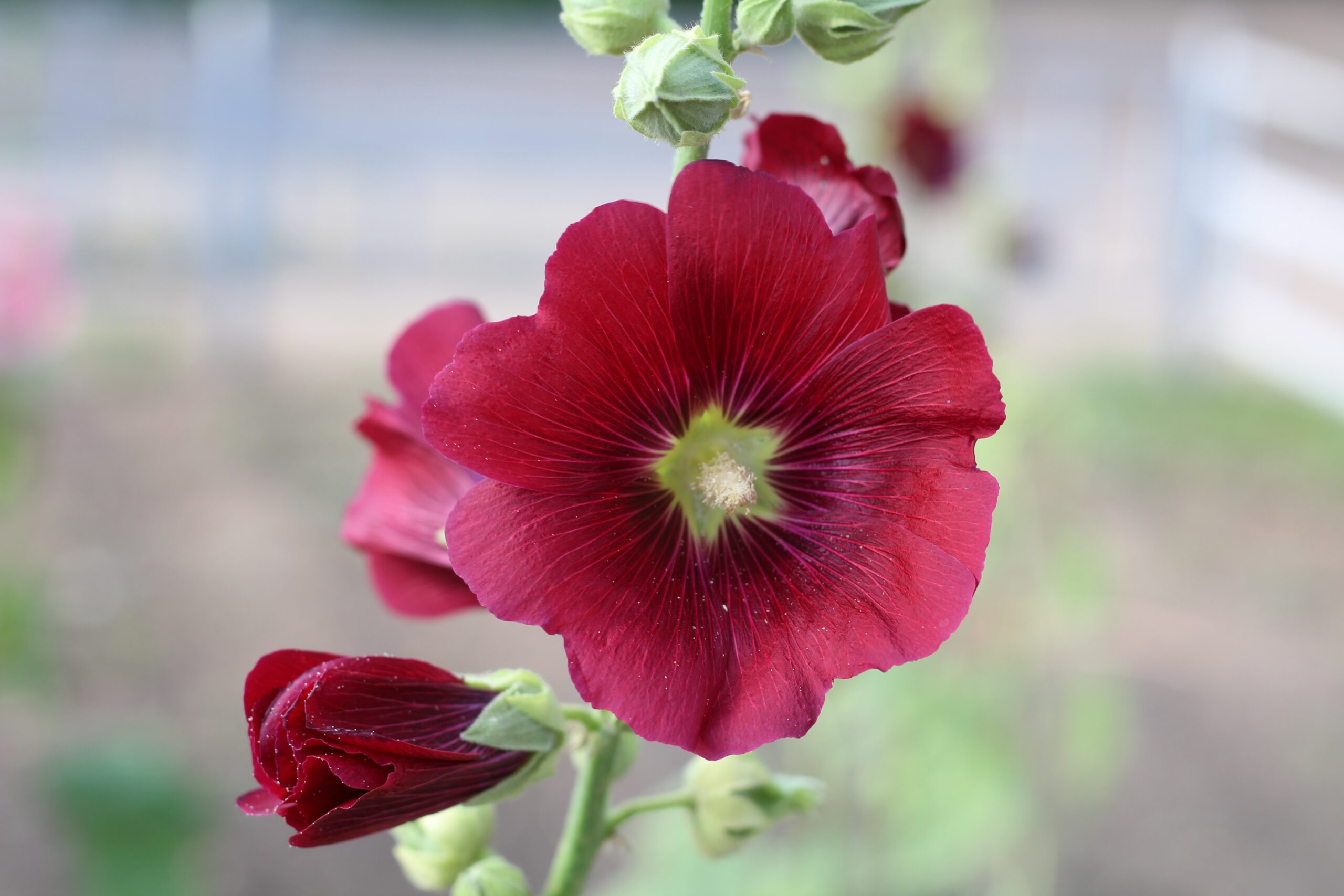The Hydrangea arborescens, also known as “seven bark” in the English language, is a deciduous shrub native to the Eastern United States. It is part of the Hydrangeaceae family and is classified as a perennial plant. The Hydrangea arborescens blooms profusely during the period between early summer and fall. The large, flower-dome arrangements of hundreds of tiny flowers start off green in color and eventually change to a creamy-white. These shrubs are wide, with green leaves which when ripe, turn to a buttery yellow during the autumn season.
The word “hydrangea” has Greek origins and is composed of the two words “hydros” which literally means “water” and “angos” which in this case translates to “vessel”. This combination is made to express the shape of the seed capsule. The Latin species name “arborescens” refers to the shrub’s trait of having tall, tree-like hardwood stems.
How to Plant Hydrangea arborescens?
Ideally, Hydrangea arborescens should be planted in direct, bright sunlight. Partial shade is best in areas with extremely hot summers. If you are sowing your own Hydrangea arborescens, sow the seeds in late winter and keep them in a warm and 80-percent humid environment. Plant both at a depth of 1-1.5 inches in moist, well-drained soil.
These plants prefer soil with slightly acidic and moist qualities. For optimal growth, soil pH level should be about 5.5 to 6.5. Some Hydrangea varieties have different preferences for the soil’s pH level, so do check the recommended level for your type of the species.
It is recommended to keep the soil around Hydrangea arborescens consistently moist and evenly mist the foliage from time to time. If you live in a cold area, overwinter the plant to ensure a healthy and better growth in the next planting season.
Meaning and Symbolism of Hydrangea arborescens
Hydrangea arborescens is considered an iconic plant in Japan, Korea and China. It is believed to be a symbol of abundance and powerful emotions. The flowers of Hydrangea arborescens represent patience, understanding, dedication and a deep appreciation of nature. In Christianity, Hydrangea arborescens is to symbolize the holy spirit. Other cultures also associate Hydrangea arborescens with transformation, freedom and sincerity.
History, Mythology, and Religious Significance of Hydrangea arborescens
The history behind Hydrangea arborescens dates back to ancient cultures. The Chinese believed that the flowers of Hydrangea arborescens could be used to make potions and elixirs that could bring good health and prosperity. In Japan, Hydrangea arborescens is associated with poetry, art, and the traditional Japanese Tea Ceremony. The traditional Blackfoot First Nation community of Canada also believed that Hydrangea arborescens had the power to provide protection and to bring blessings to the tribe.
Hydrangea arborescens is respected in many major religions and cultures. In Buddhism, the plant is a symbol of undesired situations that are unavoidable. In Christianity, Hydrangea arborescens is said to represent the Holy Trinity. The Muslim culture has long valued the beauty of Hydrangea arborescens and its message of humility and patience.
Flower Varieties and Their Defining Characteristics
The Hydrangea arborescens has many varieties, and each of them has some distinct characteristics. Here is an overview of some of the most common varieties of Hydrangea arborescens with their defining characteristics:
- Annabelle – Annabelle Hydrangea is one of the most popular varieties. It has white blooms, reaching up to 10 inches in diameter. It can reach a mature height of 3-4 feet when planted in the sun.
- Little Lamb – This variety is a dwarf shrub, reaching only 2-3 feet tall. It has white flowers and is a good choice if you are looking for a low growth Hydrangea.
- Limelight – Limelight Hydrangea has white and green blooms, reaching 6-8 inches in diameter. Its blooms are held up by sturdy, dark-red stems. This particular variety can reach a height of 8 feet.
- Bobo – If you’re looking for a small Hydrangea variety, Bobo is the perfect option. Reaching a mature height of only 2 feet tall, it has white flowers up to 6 inches in diameter.
How to Pot and Repot Hydrangea arborescens
Many people are unsure about how to pot and repot the Hydrangea – questions like how often to repot and what size pot should you use are common. The first step to potting or repotting Hydrangea arborescens is to pick an appropriate pot. The pot should be a few inches bigger as compared to the root ball or the previous pot. The depth of the pot should allow the roots to grow easily. Once you have picked the right pot, you can start by filling the pot with well-draining potting soil.
Once the pot is filled with soil, you can start potting the Hydrangea. Make sure that the top of the root ball is slightly above the top of the pot. Pat the soil around the root ball after positioning, and add a layer of mulch if desired. Water the plant thoroughly, and don’t forget to add fertilizer. Remember, when it comes to Hydrangeas it’s best to let the root ball do the deciding.
How to Prune Hydrangea arborescens
Pruning Hydrangea arborescens should be done every year in late winter or early spring. Once the winter freezes are over, you can start by removing any dead or diseased branches and stems. You could also use gardening shears to remove any unwanted suckers or sprouts. Focus on the overgrown areas and trim the branches if you want to shape the plant the way you want. Never cut the stems more than one-third of their total length.
It is recommended to use sharp and sterile pruning shears to do the pruning. Make sure that the top of the stem is cut at 45-degree angle and the base of the stem should be cut straight. Make sure that you are removing old and dead branches and leaves to maintain plant’s health.
How to Propagate Hydrangea arborescens
It is possible to propagate Hydrangea arborescens using softwood cuttings. Choose soft and healthy stems of the parent plant and use a sharp knife to make a cutting of 4-6 inches. Remove the bottom pair of leaves and dip the ends in rooting powder. Plant the cutting in the moistened potting mix and cover with either a plastic bag or a propagating cover. Place the cuttings in a warm spot with adequate lighting and remember to keep the soil moist.
Once the cuttings have rooted, you can replant them in a larger pot of compost. Do this every spring for best results.
Common Pests and Diseases of Hydrangea arborescens
Unfortunately, Hydrangea arborescens can be susceptible to certain pests and diseases. Common pests include aphids, scales, and thrips. Common diseases such as leaf spot, powdery mildew, stem canker, and root rot can also affect the growth of the Hydrangea arborescens.
The best way to prevent any pests and diseases is to keep the surrounding environment clean and free from dead leaves, grass, mulch, and other debris. Make sure to inspect all the leaves and stems regularly and remove the infected parts if needed. Adequate water and nutrients are also essential to promote healthy growth of the plants. Adding mulch to the soil can help control pest and weed problems.
Fact Sheet of Hydrangea arborescens
| Hydrangea | Hydrangea arborescens |
|---|---|
| Family | Hydrangeaceae |
| Plant Type | Perennial |
| Mature Size | 3 to 8 feet |
| Sun Exposure | Full sun to partial shade |
| Soil Type | Well-drained soil |
| Soil pH | 5.5 to 6.5 |
| Bloom Time | Late Spring to Early Summer |
| Flower Color | White, pink, purple |
| Hardiness Zones | 3 to 9 |
| Native Area | Eastern United States |
Frequently Asked Questions About Hydrangea arborescens
- Q: How big do Hydrangea arborescens get?
- A: The mature size of Hydrangea arborescens is 3-8 feet in height and 2-6 feet in width.
- Q: What is the best time to plant Hydrangea arborescens?
- A: The best time to plant Hydrangea arborescens is late winter or early spring.
- Q: What type of soil does Hydrangea arborescens prefer?
- A: Hydrangea arborescens prefers well-drained soil with a pH level of 5.5 to 6.5.
What we love from Amazon this week
Buy these wonderful flowers directly from Amazon:















